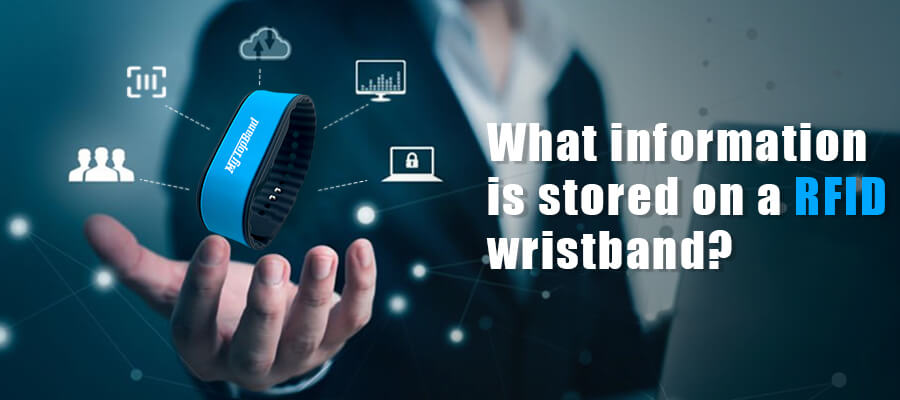
Programmable RFID wristbands are revolutionizing access control, payments, and data collection across industries. But what exactly are programmable RFID wristbands and what information can be stored on them? This comprehensive guide provides an overview of programmable RFID wristband technology and its diverse applications.
What are Programmable RFID Wristbands?
A programmable RFID wristband is a wristband containing an embedded radio frequency identification (RFID) tag that can be programmed with data for different purposes. The wristband communicates wirelessly with RFID readers. Key components include:
RFID Tag: The tag is embedded in the wristband and comprises a small antenna and silicon microchip for storing data. Popular frequencies are LF, HF, and UHF.
Programmable Memory: The amount of writable memory on the chip ranges from 512 bits up to 2KB. More memory enables more data storage.
Data Programming: Data can be encoded on the chip before or after deployment via RFID readers/programmers.
Wireless Communication: The wristbands use RFID technology to communicate with readers up to 30 feet away without needing direct contact or line-of-sight.
Materials: Common materials include silicone, plastic, paper, and fabric. Some have adjustable straps or snap closures.
Printing: Many programmable RFID wristbands feature custom printing like logos or text.
Types of Information Stored on Programmable RFID Wristbands
The types of data that can be stored on a programmable RFID wristband include:
Unique ID Number: A unique identification number (UID) is fundamental. It allows the wristband to be identified and linked to additional external data.
Access Control Credentials: For access control applications, wristbands store access rights, authorized zones, and time restrictions.
Personal Information: Wristbands can contain basic personal data like name, contact details, age, etc. for identification purposes.
Payment Information: For cashless payments, wristbands store payment account numbers, wallet IDs, or other payment data.
Event/Ticket Data: Event wristbands contain ticket type, seating info, privileges, attendee type, etc.
Medical Information: For healthcare/fitness uses, wristbands can store medical conditions, medications, emergency contacts, and other health data.
Other Data: Wristbands also can contain inventory/asset data, transit access info, loyalty program data, and more.
Key Benefits of Programmable RFID Wristbands
Programmable RFID wristbands offer major advantages including:
Versatile Functionality: The programmable memory allows wristbands to serve diverse functions from access control to payments by simply changing the encoded data.
Customization: Data fields and formats can be tailored to each application’s specific needs.
Real-Time Updates: New data can be written to the wristbands remotely over-the-air after deployment as needs change.
Security: Wristbands can only be scanned by authorized readers, preventing data theft. Encryption adds security.
Durability: Silicone wristbands withstand daily wear and tear.
User-Friendly: Lightweight wristbands are easy and comfortable for all-day wear. No batteries are required.
Programming RFID Wristbands
Programming RFID wristbands involves encoding data into the chip’s memory so it can be retrieved later by readers. Programming methods include:
Pre-Programmed: Wristbands are programmed with data at the time of manufacturing.
On-Site Programming: Data is encoded onsite via mobile apps or RFID programmers at the deployment location.
Over-the-Air Programming: New data can be sent to the wristband wirelessly after deployment when updates are needed.
User Input Programming: Somewristbands feature buttons allowing users to input data like survey responses that get encoded.
Key Applications of Programmable RFID Wristbands
Programmable RFID wristbands enable many valuable applications:
Access Control: Programmable wristbands allow hands-free building/room entry. Staff can update access remotely over-the-air.
Cashless Payments: Payment info is directly loaded onto the wristbands for tap-and-go transactions at events/facilities.
Event Management: Programmable wristbands automate event ticketing, registration, attendance tracking, and access control.
Medical/Health: Patient health records, medication info, and emergency contacts are securely accessible on scan-able wristbands.
Transit: Customizable wristbands can serve as reloadable transit passes.
Inventory Management: Assets and shipments can be tracked using programmable wristbands.
Marketing: Wristbands allow users to redeem offers, collect loyalty points, and receive promotions.
Ensuring Programmable RFID Wristband Security
With sensitive user data, security is crucial. Recommended measures include:
- Encrypting stored data via algorithms like AES or Mifare.
- Requiring password access to program or read wristbands.
- Using authentication to validate scanned wristbands.
- Limiting data visibility only to authorized systems.
- Providing tamper-evident wristband designs.
MyTopBand company manufacture programmable RFID wristbands, we have professional engineer team help client finish wristband encode work, If you are looking for programmable rfid Wristband supplier, we are confident to provide you with high-quality services.Please find us: www.mytopband.com, or send message to info@mytopband.com, we will reply you within 24 hours.
